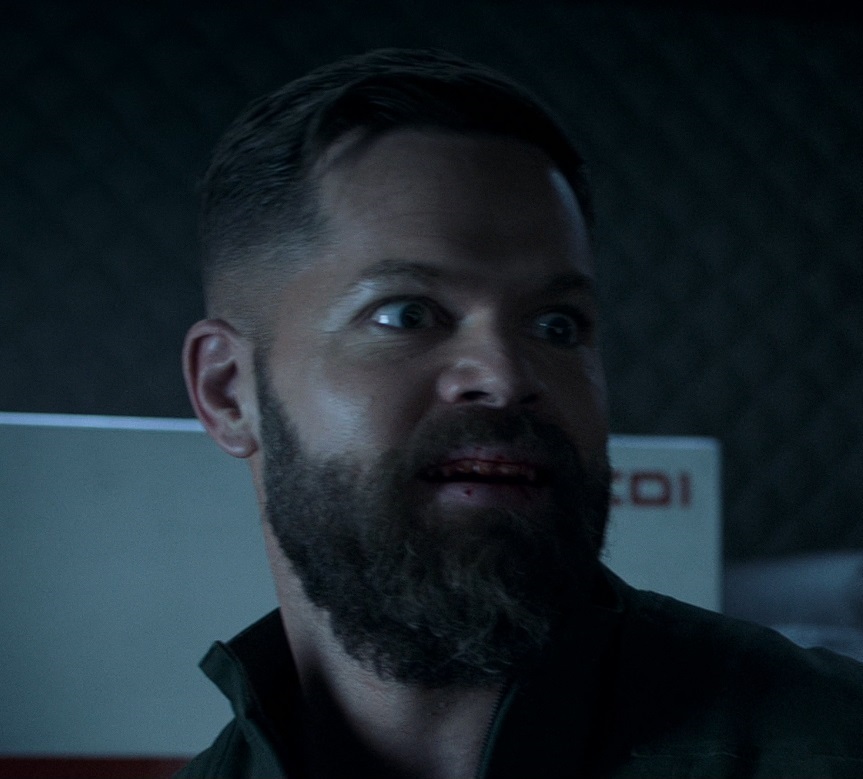Personally, I find Brown Dwarfs to be absolutely fascinating. An object that isn’t quite a planet and isn’t quite a star, but something in between.
What would one even look like? Would it look like a gas giant that’s glowing red, along with swirls of gas in its atmosphere like Jupiter? Or would it resemble a star and have a fiery surface like the sun? I prefer to imagine them as glowing gas giants but I don’t know how realistic that is.
Gas giants in general are fascinating to me as well, I really hope we send a probe into one of the gas giants with a camera before I die. I’d absolutely love to see what it looks like inside a gas giants atmosphere before the probe gets crushed by the increasing pressure as it descends.
Magnetars. I want to throw an asteroid or something at one and watch it get ripped apart on a subatomic level purely by magnetism.
Magnetars are fucking cool as hell, I vividly remember getting a Scientific American magazine as a kid that was all about Magnetars. Such fascinating objects.
Honestly earth.
Here is so much undiscovered that could help us understand space a lot better.
Congratulations. You win the “technically correct” award.
Like what?
Lagrange Points (L4 and L5 specifically). Here’s a bit of space with a gravitational effect keeping you inside, but not due to mass inside it. It’s due to the relation of two other masses. Mind-boggling.
Venus. It’s got this mega-dense atmosphere. Why? It’s an anomaly when you compare it to the other similarly-sized planets in our solar system. The gas giants having thick atmospheres makes sense, but Venus? Actually, I just had a thought. The Sun’s mass generally pulls gas toward it. Gas that is in between the Sun and Mercury gets pulled into the Sun. Gas between Mercury and Venus gets pulled into the Sun too, since the closeness of the Sun makes its gravitational effect very influential compared to Mercury’s. Gas between Venus and the Earth, however, is far away enough from the Sun that it will stabilize around a Venus-sized planet. This explains the discrepancy between Mercury’s and Venus’s atmospheres. Not sure about the Venus/Earth discrepancy, but perhaps Mars’s light atmosphere is due to its lower mass.
Callisto. Why is it so dark? Why is the ice (the light splotches on the surface) like polka dots, rather than either an ocean or more diffuse?
Callisto
Past geological activity spewing dust over ice?
I find neutron stars fascinating. The remnant of a star that was almost big enough to form a black hole but not quite. The gravity pulls all the matter left after a supernova into a bizarre form of matter. The protons and electrons are smushed together making basically the whole thing neutrons. They’re packed together so densely, a teaspoon would weigh as much as a mountain. A star much bigger than the sun suddenly condensed into like 20km.
Plus, some form pulsars spinning so fast that it seems impossible. The record is over 1,000 rotations per second. Some form magnetars, the strongest magnets in the universe. There might be an even more exotic form of matter — “strange matter” made of strange quarks — in their core.
It’s amazing what a really big boom can do. We can’t even fathom the bigness of that kind of boom. To get a star remnant rotating faster than the human eye can detect is just… mind boggling.
You’ll definitely find video gamers who claim to be able to see that temporal resolution, of course.
If your monitor isn’t clocking 1000 Hz are you really a gamer?!?!
Your username is intriguing. Have you tried it? Is it any good?
Also, neutron stars are awesome. Densities on the order of “Mount Everests per teaspoon”? Almost unimaginable.
Almost? 😂
Far as my username goes, much like interacting with me, I don’t recommend it! lol
I am going to mention the rogue planets, since no one else has mentioned them here yet. Those unlucky celestial bodies ejected by their home star, destined to fly through the universe alone, dark and cold, forever.
And intergalactic stars, ejected out of the galaxy
Remembers me of voids.
Black Holes are infinitely fascinating!
They’re ’a thing’ we knew nothing about until Einstein wrote a paper, and even though his own math showed their existence, he doubted that they could be real.
Turns out that they are, and that they form the structure of the entire universe.
That’s my object.
My favorite thing is Quantum Field Theory! You know the field of magnetism, you played with it as a kid when you got your hands on two magnets the first time.
Turns out every particle in the standard model has its own field, and an excitation of that field manifests as that type of particle.
David Tong explains it masterfully: https://youtu.be/zNVQfWC_evg
As does HOTU: https://youtu.be/UYW1lKNVI90
EDIT: Both links above are 1+ hours each, and done in layperson terms. No degree needed, just a desire to learn something fascinating.
Black holes just blow my mind. Even in the future, how the hell will we ever be able to study and truly understand them? Unless we find a way to break the light speed barrier, I feel like they’re going to remain as the one object we can never truly understand.
Hmm I’ll have to read about the quantum field theory, I haven’t heard of that before.
Thanks for the YouTube links, I can always use more space heavy channels in my life!
I always get the impression magnetism and the force keeping particles together must be similiar somehow.
The “force” keeping particles together are other particles! With their own quantum fields even.
Here’s an 8 minute primer on the Standard Model: https://youtu.be/XYcw8nV_GTs
Or our representation of them, so that we can imagine them?
Super Earths, because we know so little about them. They are the most common planet type (based on census from Kepler and TESS), but our solar system doesn’t have one, so we have no idea what they are like. Models and simulations give a few possible compositions, resembling mini-Neptunes, or water worlds with thick oceans, or more like Earth. Maybe all are possible. Earth-like rocky super-earths may be more geologically active than Earth, due to stronger convection and thinner crust. If they orbit a K-type dwarf, they could be candidates for super-habitable planets, with conditions even better for life than Earth.
“Super Earth, our home…”
Sorry, I get what you’re talking about but my mind has been permanently tainted to think of Helldivers now whenever I see a mention of Super Earth’s haha.
But to be serious, I agree completely. Massive rocky planets are a fascinating topic, and the idea of a planet even more habitable for life than Earth is hard to even imagine but is a fascinating concept. I’ve also read about “evaporated” gas giants, where the star’s stellar wind has blown away the thick atmosphere of a mini Neptune and left behind just the rocky core, which is thought to have a ton of water left.
Such a shame I wasn’t born in a future where we can casually explore space, that may never be a reality but I like to think it will be.
We can’t visit other star systems within our current lifetimes, but there’s no reason we can’t build bigger and better telescopes over the next few decades. That’s the next best thing, and we can do it from the comfort of our home planet!
Same here! Excuse me, I think I hear some bots…now where did I leave my autocannon…?
The idea behind the heliosphere and all its related parts are really interesting. Something about a giant space bubble/teardrop flying through the galaxy that blows my mind. Learning about termination shock and the sink basin example really gave off this weird sense of cosmic grandeur that can be somewhat replicated on earth. As above so below kinda thing.
Przybylski’s Star. A star that, based on its spectrum appears to have several elements in it that really shouldn’t be there.
https://en.wikipedia.org/wiki/Przybylski%27s_Star
“Przybylski’s observations indicated unusually low amounts of iron and nickel in the star’s spectrum, but higher amounts of unusual elements such as strontium, holmium, niobium, scandium, yttrium, caesium, neodymium, praseodymium, thorium, ytterbium, and uranium. In fact, at first Przybylski doubted that iron was present in the spectrum at all. Modern work shows that the iron group elements are somewhat below normal in abundance, but it is clear that the lanthanides and other exotic elements are highly over-abundant.”
Just read through the Wikipedia article on that star, that’s insanely cool. I’ve never heard about this particular star before so that was a fun read.
Here’s a good bit more in depth read about it, it is excellent
Thanks!
Edit: Finished reading the article, and it was great! Gonna be scrolling through that website tonight as my night reading before bed. Thanks again for the link!
Honestly, our moon.
I firmly believe that our moon gives us the solar system in short order.
Fuel in the form of Helium-3 (if we can figure that out). Plenty of building material. Much lower gravity well that will allow larger payloads into it’s orbit and larger ships to be constructed. As well as that lower gravity well meaning better fuel efficiency in launching just about any trajectory to anywhere else in the solar system.
Once we have the Moon, we’re 90% of the way to a solar system spanning species. Mars is cool, but not useful in any real sense other than bragging rights.
The S-IVB-506.
This was the third stage of the launch vehicle for Apollo 11. After entering Earth orbit, the S-IVB rocket was responsible for the translunar injection burn. Once the burn was complete, the command module, LEM, astronauts and the spent rocket were then coasting to the moon. The astronauts would detach the CSM, pitch up, translate in, extract the LEM, then thrust with RCS to get clear of the S-IVB. At this point, the rocket is still on a coarse to the moon.
Many of them orbit between the Earth and moon to this day. One is speculated to orbit between the Earth and Sun. Many impacted the lunar surface, including the one from Apollo 13.
The S-IVB-506 rocket was the one that carried Apollo 11 to the moon. It’s a piece of human history, floating silently in a heliocentric orbit above us.
That oamua thing that zipped through the solar system a few years back.
The ayy lmao probe 👽
That irregularly light reflecting thing that didn’t quite follow the trajectory it was supposed to that just flew through the solar system a few years back on its way to somewhere else and we never got a chance to look closely at it to see what the fuck it even was
Oumuamua
Thank you for providing the name. I can’t believe I missed this, how fascinating is it 👀
Hypothetical, but Black Hole Stars (one of my favourite Kurzgesagt videos).
“Normally that would be the end – today’s stars go supernova, a black hole forms and things calm down. But in this case, the star survives its own death.”
“An impossibly dangerous balance has been created – millions of solar masses pushing in, the angry radiation of a force fed black hole pushing out.”
I’m hoping that some of the new long wavelength teleescopes like JWST might have a chance of seeing one of these beasts.
I…what? Hold on, it was commonly thought that black holes effectively compress and hold infinite mass. Then math or simulations (or both) pointed out this isn’t true, I think. Running on very dim memories here. IF this is true, then somehow the solar mass of the star is, uh…well fuck me. The ADHD train came in and I lost what I was thinking.
Any chance you have a compelling link on this topic?
it was commonly thought that black holes effectively compress and hold infinite mass
Black holes definitely don’t have infinite mass. They might have infinite mass density (gravitational singularity) within them, but we can’t know for sure, since we can’t see inside black holes.
M87
https://en.m.wikipedia.org/wiki/Messier_87
Freaking enormous galaxy. Is unusual in almost every way.





